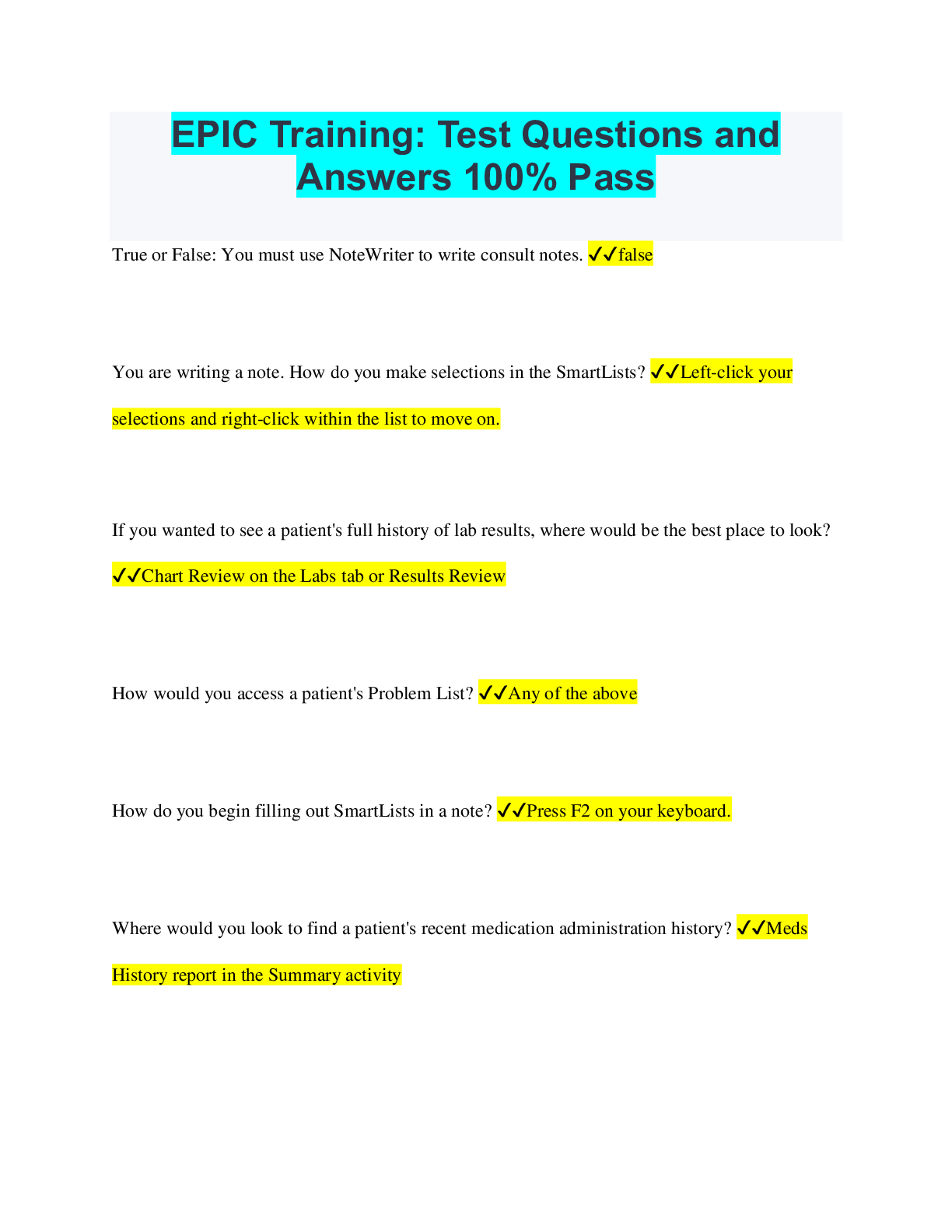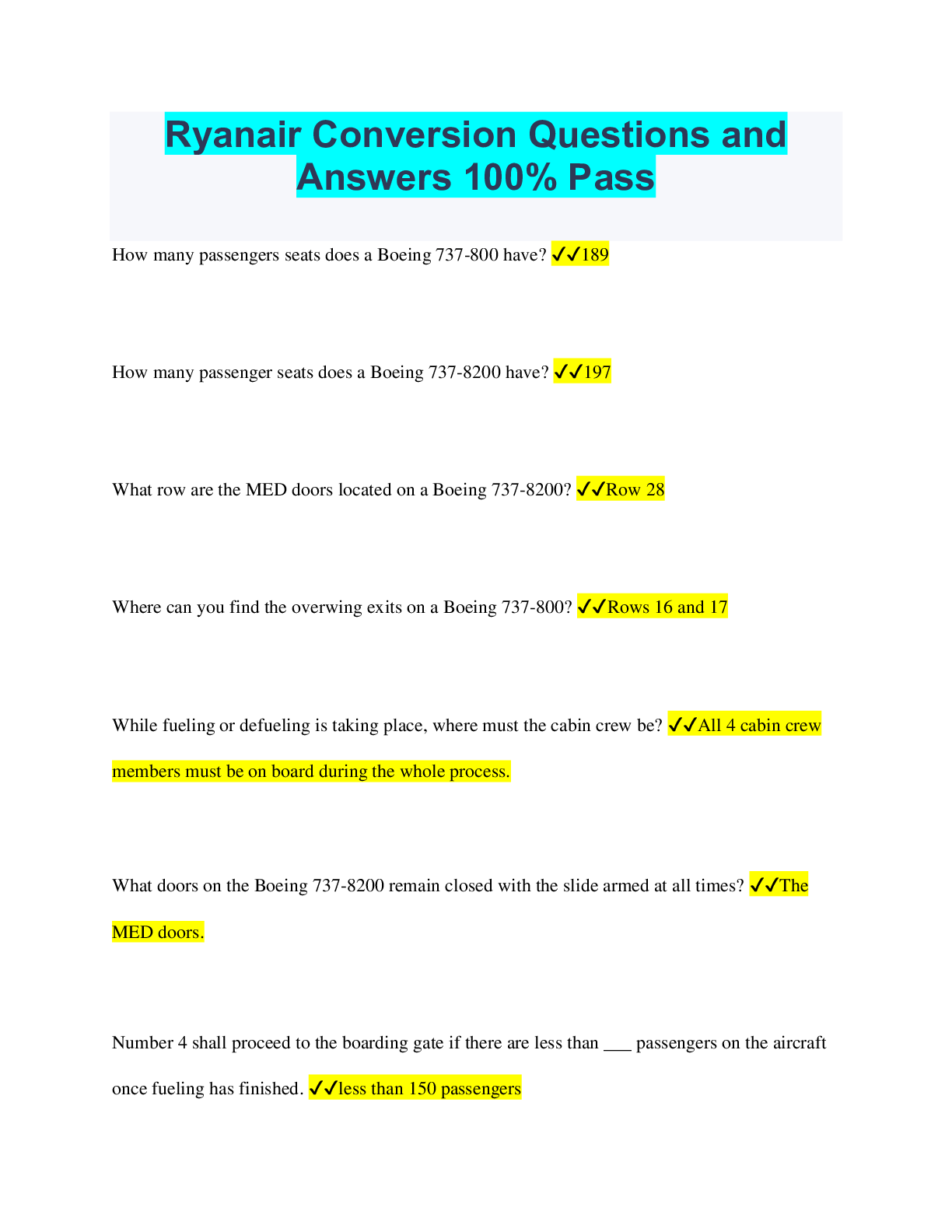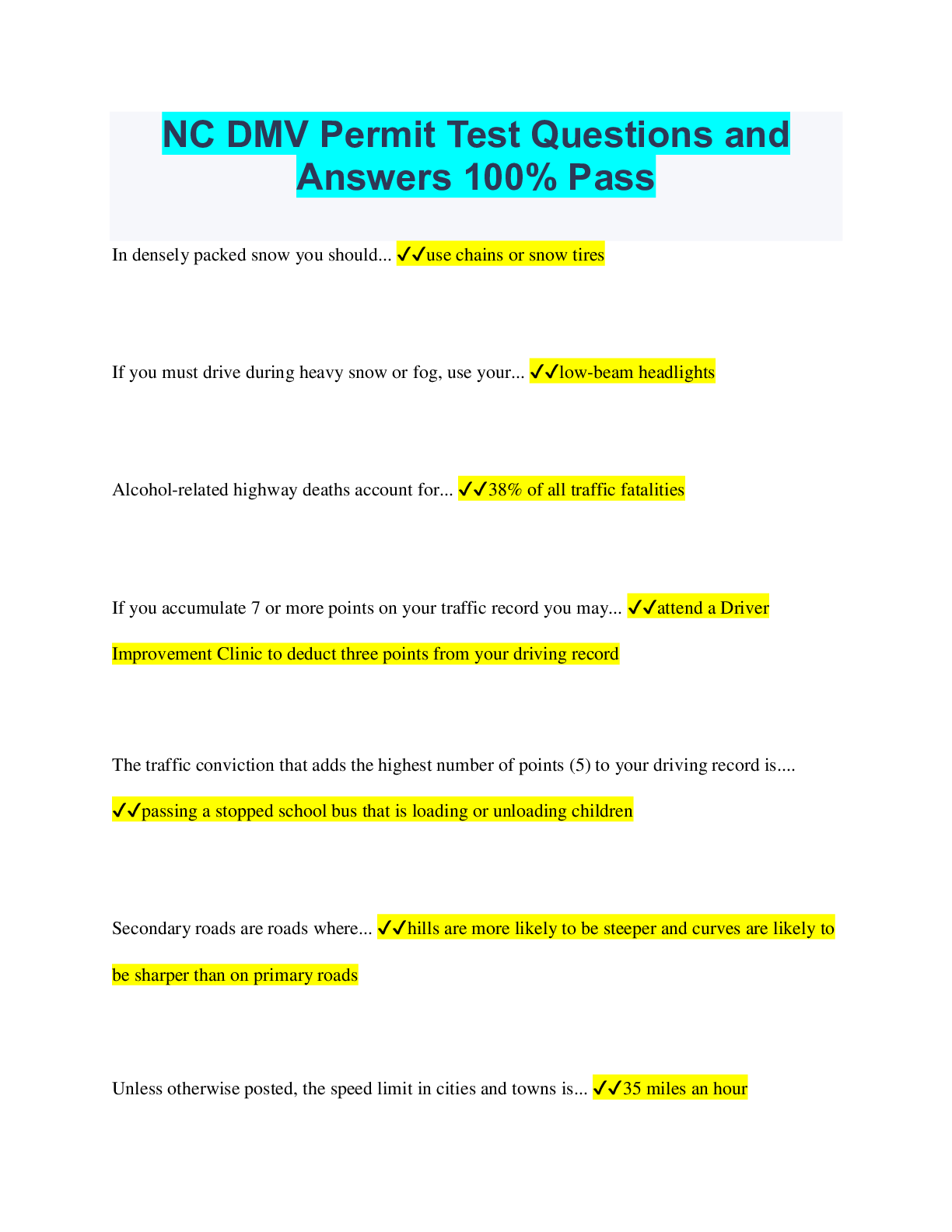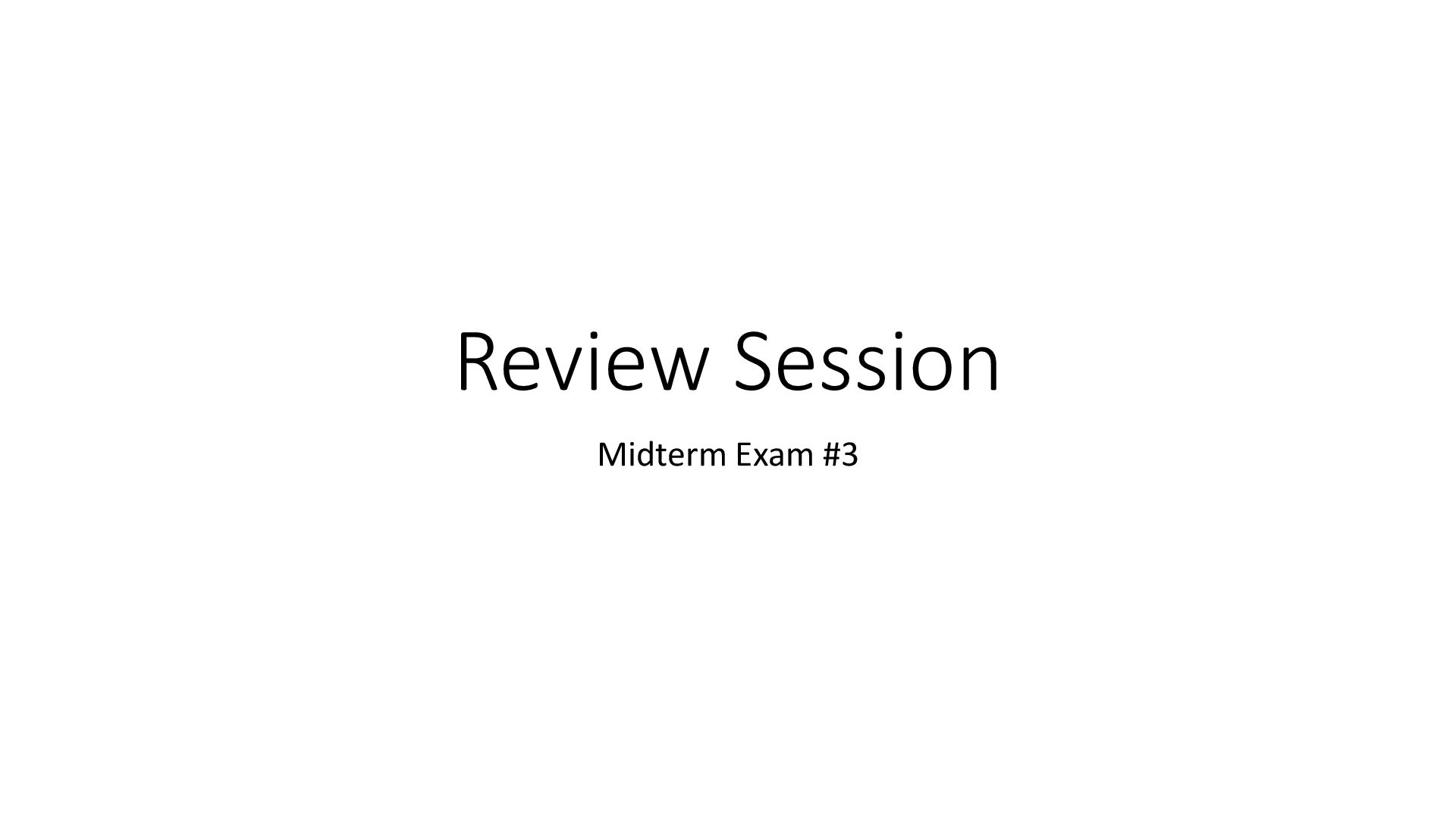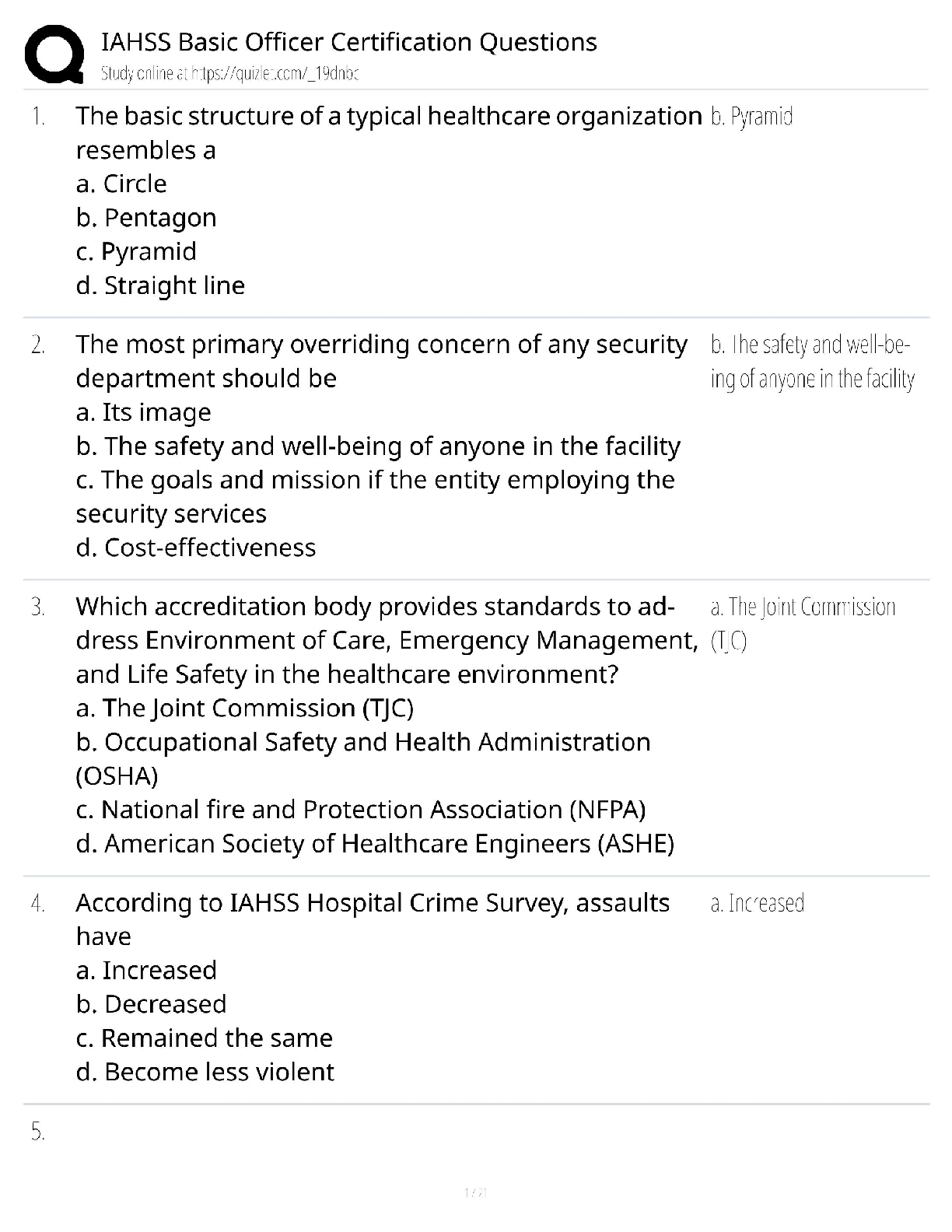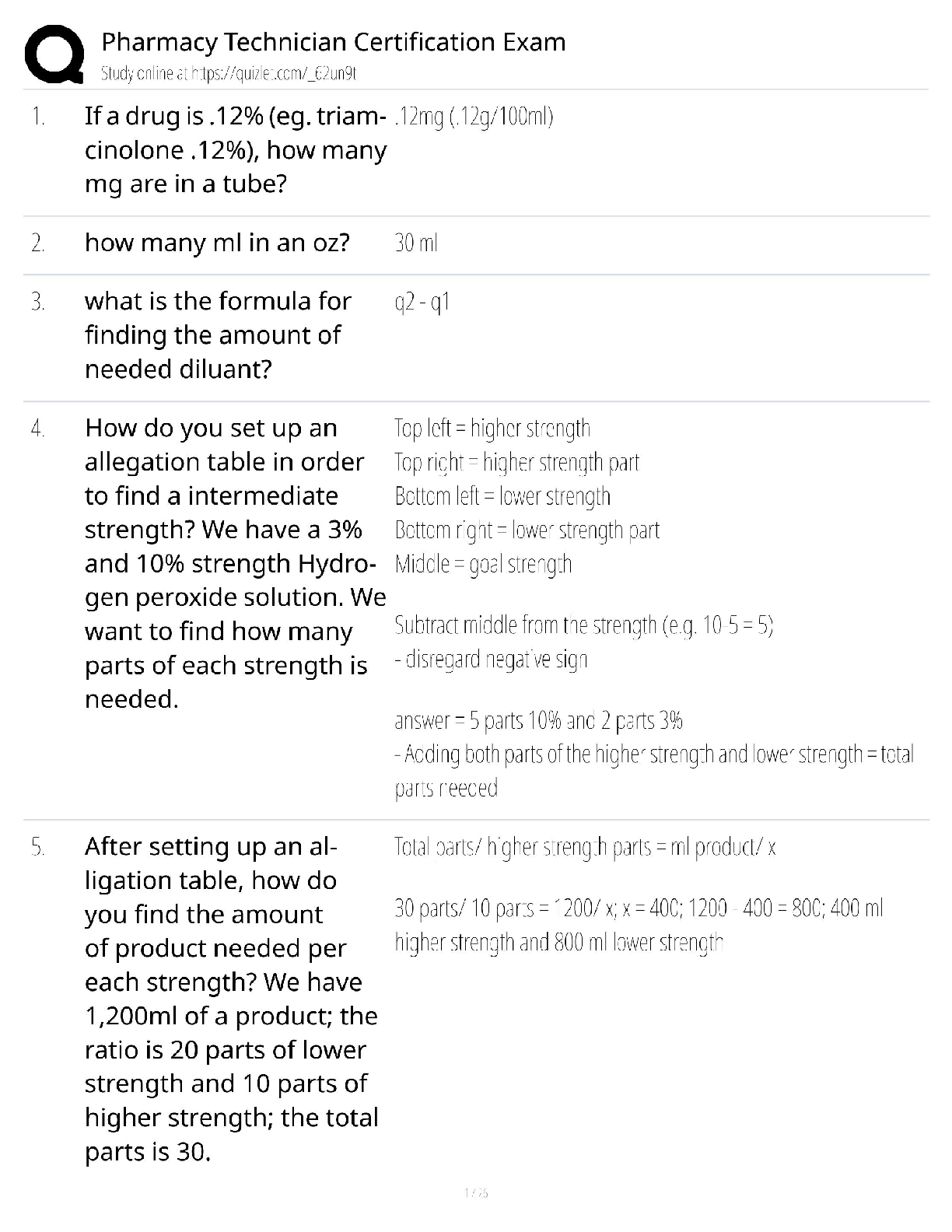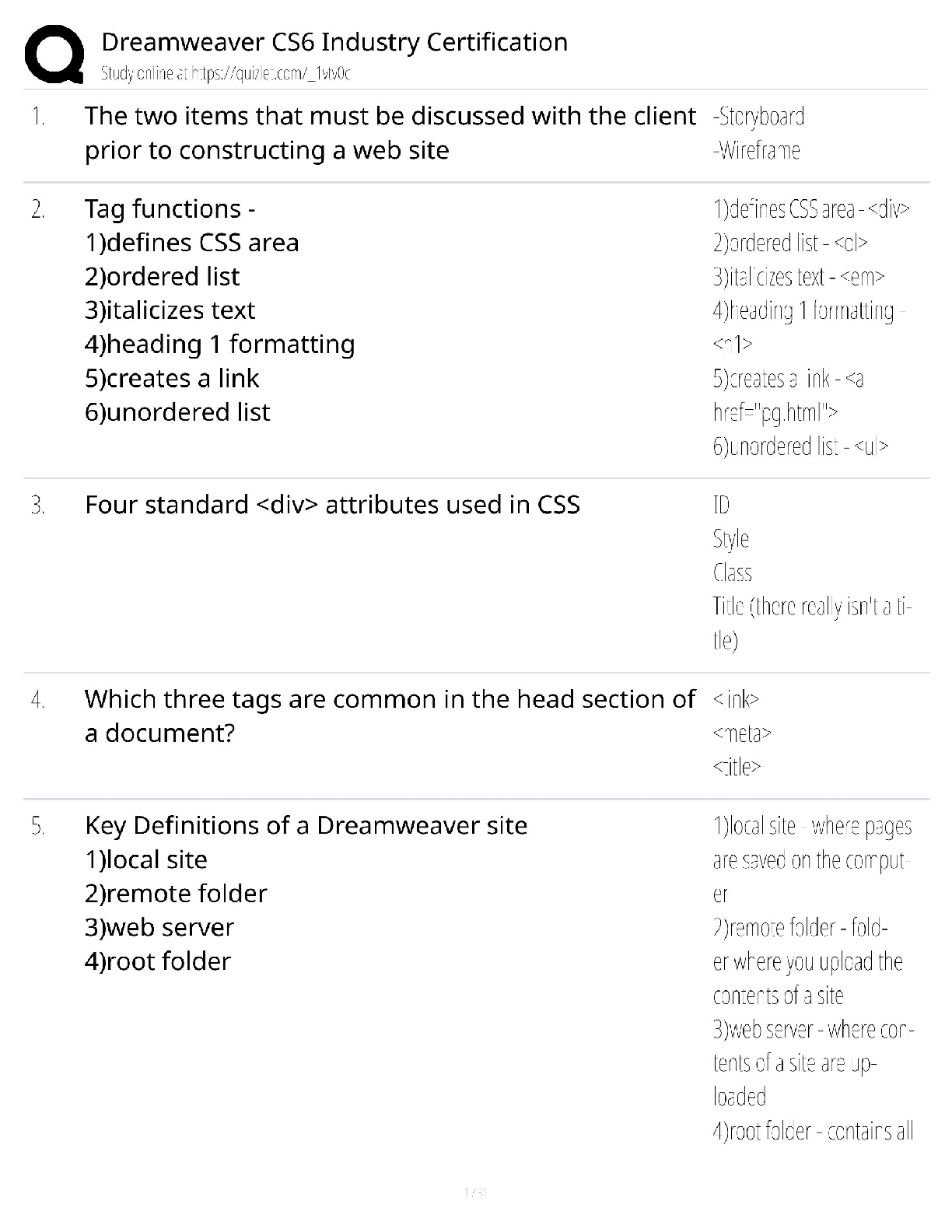Anatomy > QUESTIONS & ANSWERS > BIOS 251 Final Exam (Version 1)|DEVRY UNIVERSITY WITH COMPLETE VERIFIED SOLUTION (All)
BIOS 251 Final Exam (Version 1)|DEVRY UNIVERSITY WITH COMPLETE VERIFIED SOLUTION
Document Content and Description Below
Question 1.1. (TCO 7) Which of the following is NOT a major function of muscle tissue? (Points : 3) Moving blood throughout the body Generation of heat through contractions Storage of information ... Promotion of movement of body structures Protection of organs Question 2.2. (TCO 7) In an isometric contraction the muscle develops tension but does not (Points : 3) shorten. widen. expend energy. conduct electrical current. exhibit elasticity. Question 3.3. (TCO 7) The muscle that is the major driving force during a movement is called the (Points : 3) antagonist. synergist. fixator. agonist. asynergist. Question 4.4. (TCO 7) The biceps brachii muscle that is used to pick a cell phone off from a table top represents the _____ in a Newtonian model of a lever system. (Points : 3) fulcrum load 2 force rotator agonist Question 5.5. (TCO 8) A hyperpolarizing graded potential (Points : 3) makes the neuronal membrane more negative. makes the neuronal membrane less polarized. is considered a type of an action potential. is the repolarization gradient associated with the end of the action potential. occurs as the neuronal membrane approaches threshold. Question 6.6. (TCO 8) The component of a neuron that provides the spatial integration of incoming signals is the (Points : 3) axon. soma. myelin sheath. axon hillock. axon terminals. Question 7.7. (TCO 8) Which of the following ventricles is found along the midline superior to the hypothalamus and within the central gray region? (Points : 3) First ventricle Second ventricle Third ventricle Fourth ventricle Cerebral aqueduct 3 Question 8.8. (TCO 8) Which of the cranial nerves transmits signals from the eye to the brain? (Points : 3) IV II III IV X Question 9.9. (TCO 8) Damage in the right medial frontal cortex could lead to problems associated with (Points : 3) hearing. moving the right side of the body. moving the left side of the body. seeing. All of the above Question 10.10. (TCO 8) This type of brain wave activity occurs at regular intervals when a person is awake but does not occur during sleep. (Points : 3) Alpha waves Beta waves Theta waves Delta waves All of these waves occur during the waking state Question 11 [Show More]
Last updated: 3 years ago
Preview 1 out of 15 pages
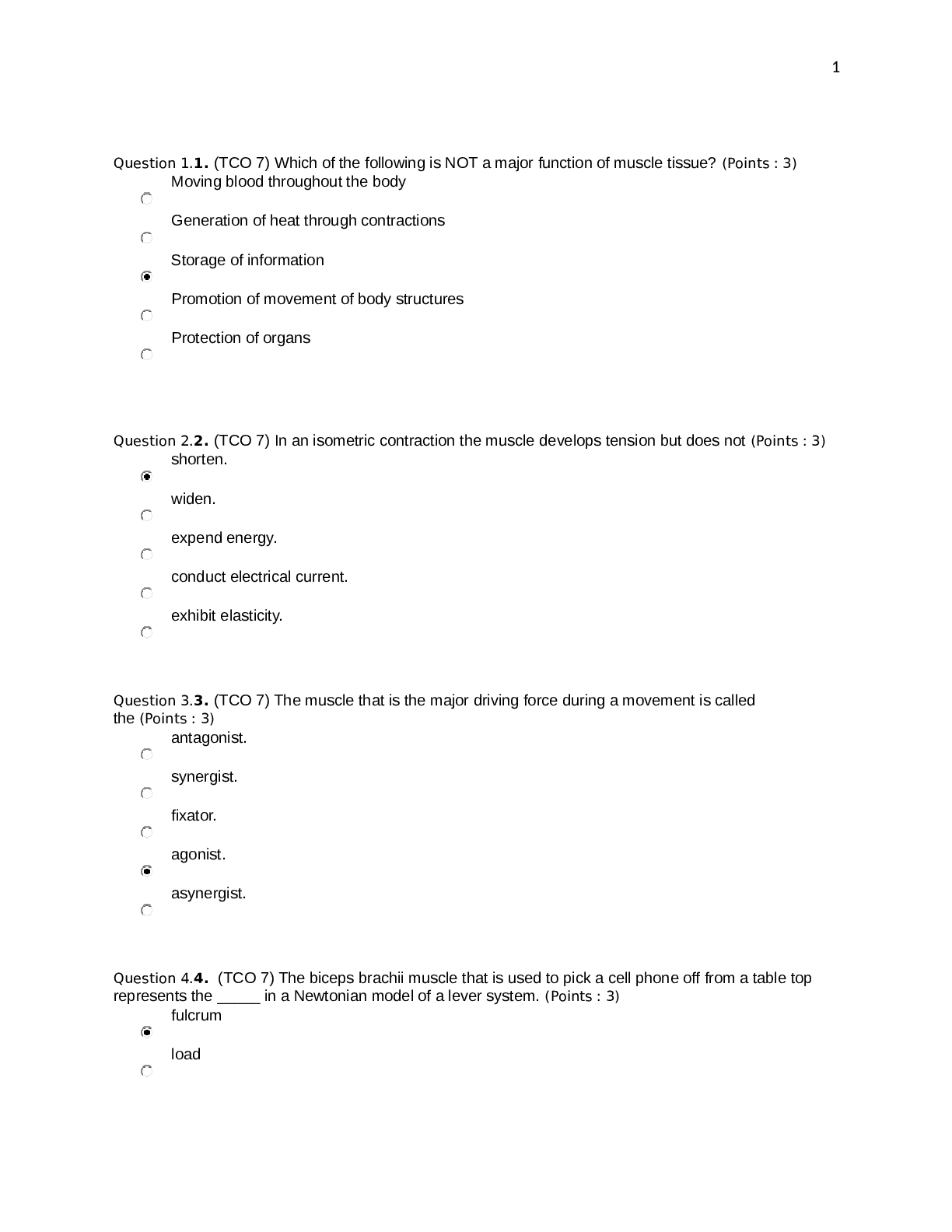
Buy this document to get the full access instantly
Instant Download Access after purchase
Buy NowInstant download
We Accept:

Reviews( 0 )
$14.00
Can't find what you want? Try our AI powered Search
Document information
Connected school, study & course
About the document
Uploaded On
Nov 20, 2021
Number of pages
15
Written in
All
Additional information
This document has been written for:
Uploaded
Nov 20, 2021
Downloads
0
Views
145


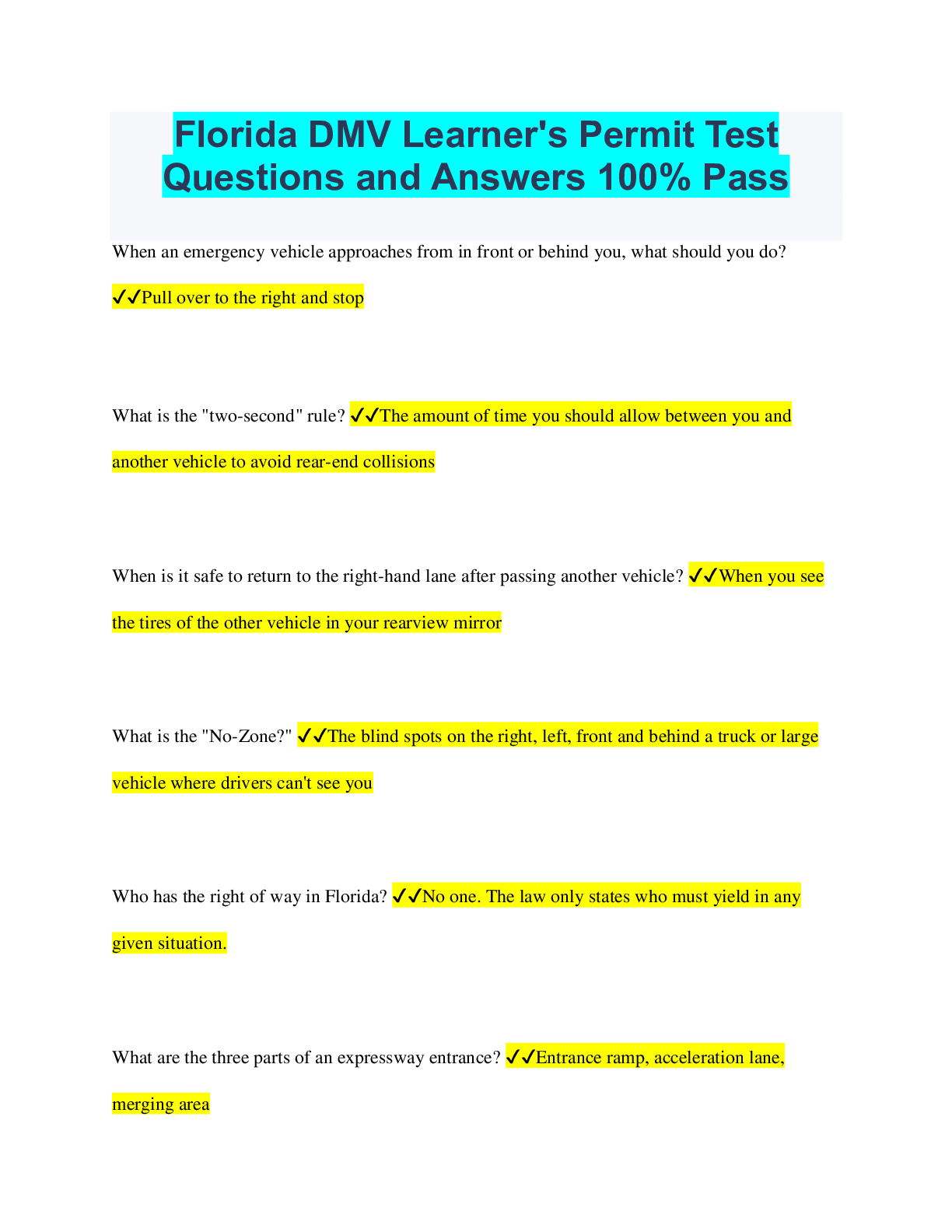
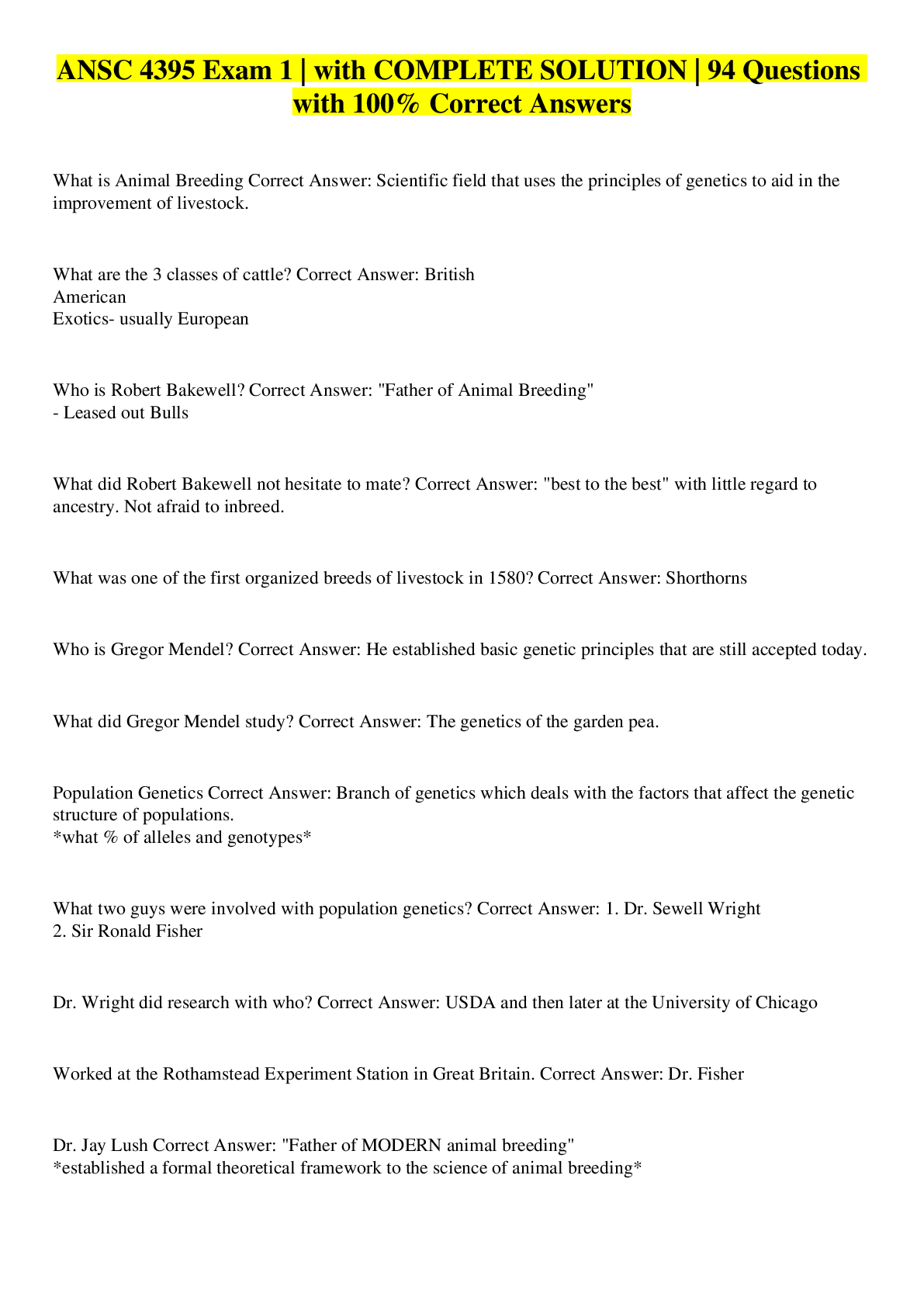

.png)


